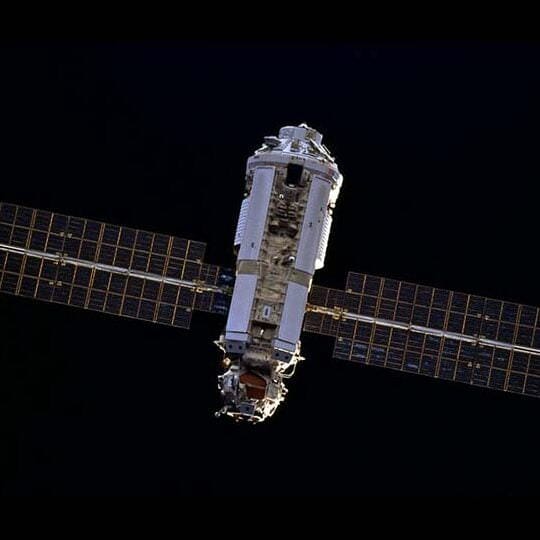The first ISS was launched to verify calculations and basic technical solutions for the launch, conduct ionospheric studies of radio wave transmission emitted by the satellite transmitters, experimentally determine the density of the upper atmosphere based on satellite braking, and study the operating conditions of the equipment.
The maximum diameter of the first ISS was 0.58 m.
Sputnik-1 – Sputnik-1, the first artificial Earth satellite, was launched into orbit on October 4, 1957. The satellite’s code designation is PS-1 (Simplest Sputnik-1). The launch took place from the 5th research range of the USSR Ministry of Defense Tyura-Tam (later called Baikonur Cosmodrome) using a Sputnik launch vehicle based on the R-7 intercontinental ballistic missile.
The scientists who were involved in the creation of an artificial Earth satellite, under the leadership of S. P. Korolev, the founder of practical cosmonautics, supervised the project. The development of the artificial satellite was carried out by P. Korolev, M. V. Keldysh, M. K. Korolev, Tikhonravov, N.S. Lidorenko, G.Y. Maximov, V.I. Lapko, B.S. Chekunov, A.V. Bukhtiyarov, and many others.
The launch date is considered to be the beginning of the space age for humanity, and in Russia, it is celebrated as a significant day for the Space Forces.
Flight parameters [ edit ]
- Flight start – On October 4, 1957 at 19:28:34 GMT.
- Flight end – On January 4, 1958
- Vehicle weight – 83.6 kg;
- Maximum diameter – 0.58 m.
- Orbital inclination — 65.1°.
- Orbit period – 96.7 min.
- Perigee – 228 km.
- Apogee – 947 km.
- Witkov — 1440
Design [ edit ]
The design of the satellite consisted of two hemispheres made of aluminum alloy with a diameter of 58 cm. These hemispheres were connected by 36 bolts and docking spars. To ensure a tight joint, a rubber gasket was used. On the upper half-shell, there were two corner vibrator antennas [1] positioned crosswise. Each antenna had two arms-pins with lengths of 2.4 m and 2.9 m, forming an angle of 70 degrees between them. This design allowed for uniform radiation in all directions, which was necessary for stable radio reception as the satellite was not oriented.
Contained within the hermetically sealed container were the following components: a silver-zinc battery block weighing approximately 50 kg, serving as an electrochemical power source; a radio transmitter [2]; a fan; a thermorelay and air duct for thermal control; an onboard electrical automation switch; temperature and pressure sensors; and an onboard cable network. The total weight of the enclosure and its contents was 83.6 kg.
History of Creation
The launch of the first satellite was preceded by extensive efforts from Soviet rocket engineers led by Sergei Korolev.
1931-1947
In 1931, the Soviet Union established the Jet Propulsion Research Group with the aim of designing rockets. This group included prominent individuals such as Zander, Tikhonravov, Pobedonostsev, and Korolev. In 1933, the group was restructured into the Jet Institute, which continued its work on the development and enhancement of rockets.
1947-1957. From “Fau-2” to “PS-1”. [ edit ]
The history of the creation of the First Sputnik is closely tied to the development of rocket technology. Both the Soviet Union and the United States drew inspiration from German origins in their pursuit of space exploration.
The V-2 rocket, which served as a foundation for future advancements, incorporated the visionary ideas of brilliant minds such as Konstantin Tsiolkovsky, Herman Oberth, and Robert Goddard. As the world’s first guided ballistic missile, the V-2 possessed the following key characteristics:
- Maximum firing range: 270-300 kilometers
- Initial mass: up to 13,500 kg
- Head mass: 1,075 kg
- Propellant components: liquid oxygen and ethyl alcohol
- Engine thrust at launch: 27 tons
During the boost phase, stable flight was achieved through the implementation of an autonomous control system.
Back then, none of us could have predicted that, by collaborating with Korolev, we would have the opportunity to be part of the historic launch of the world’s inaugural satellite into space and, shortly thereafter, witness the first human being venture beyond Earth’s atmosphere.
The year 1947 saw the start of the Soviet Union’s efforts to advance rocket technology, with the commencement of flight tests for the Fau-2 rockets, which had been assembled in Germany.
During the year 1948, the Kapustin Yar test range witnessed the testing of the R-1 missile, which was a modified version of the Fau-2 and was completely manufactured within the borders of the USSR. In that very same year, the government issued decrees regarding the development and testing of the R-2 missile, which had a range of up to 600 km, as well as the design of a missile with a range of up to 3000 km and a head mass of 3 tons. Starting from 1949, the R-1 rockets were utilized for a series of high-altitude launch experiments aimed at space exploration. By 1950, the R-2 rockets had already undergone testing, and in 1951, they were officially put into service.
The development of the R-5 missile, with a maximum range of 1200 km, marked a significant departure from Fau-2 technology. These missiles underwent testing in 1953, which prompted further research into their potential as nuclear weapons carriers. The integration of atomic bomb automatics with the missile required substantial modifications to enhance its reliability. As a result, the R-5M, a single-stage medium-range ballistic missile, was created. On February 2, 1956, the world witnessed the launch of the first-ever nuclear-powered missile.
On February 13, 1953, a historic decree was issued, mandating the initiation of the development of a cutting-edge two-stage intercontinental ballistic missile with an impressive range of 7-8 thousand kilometers. Initially, the plan was for this missile to be equipped with an atomic bomb of similar proportions to the R-5M. However, after the successful test of a thermonuclear charge on August 12, 1953, it became apparent that constructing a carrier rocket for such a bomb within the next few years would be a daunting task. Nevertheless, in November of the same year, Korolev gathered his closest deputies for a crucial meeting, during which he delivered the following report:
Vyacheslav Aleksandrovich Malyshev, Minister of Medium Machine Building and Deputy Chairman of the Council of Ministers, unexpectedly approached me. He made a strong suggestion to “abandon the idea of an atomic bomb for the intercontinental missile.” He informed me that the designers of the hydrogen bomb have assured him that they can significantly reduce its weight, bringing it down to 3.5 tons for the rocket version.
– (excerpt from “The First Space” collection, p. 15)
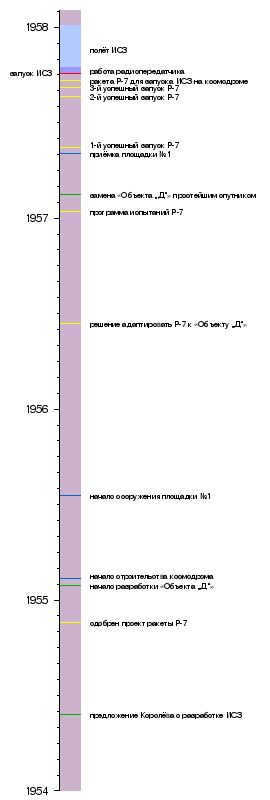
On the 20th of May in 1954, a government decree was issued regarding the advancement of a dual-stage intercontinental missile known as the R-7. Then, on the 27th of May, Korolev submitted a report to the Minister of Defense Industry, D.F. Ustinov, detailing the progress of an ISV (Intercontinental Ballistic Missile) and the potential for its launch using the future R-7 rocket. The basis for this report was a series of research projects titled “Studies on the creation of an artificial Earth satellite,” which took place from 1950 to 1953 at NII-4 of the Ministry of Defense under the guidance of M.K. Tikhonravov.
The approved project for the new rocket layout was given the green light by the USSR Council of Ministers on November 20, 1954. Numerous new challenges needed to be addressed within a tight timeframe, including the development and construction of the missile, selecting a suitable launch site, building launch facilities, ensuring all necessary services were in place, and equipping the entire 7000-kilometer flight path with observation points.
The initial R-7 missile complex was constructed and tested between 1955 and 1956 at the Leningrad Metal Works. Concurrently, in compliance with the government decree of February 12, 1955, the construction of the NIIP-5 near the Tyura-Tam station was initiated. During the assembly of the first rocket in the factory shop, a delegation of prominent members of the Politburo led by Khrushchev visited the plant. The missile left a profound impression not only on the Soviet leadership but also on leading scientists.
We [nuclear scientists] believed we were operating on a grand scale, but what they witnessed was on an entirely different magnitude. I was astounded by the immense, easily visible technical expertise, the synchronized efforts of hundreds of highly skilled individuals, and their almost routine, yet highly professional approach to the extraordinary matters they were handling….
– (comp. "The First Space", p. 18)
On January 30, 1956, the government issued a decree regarding the establishment and launch of “Object D”, a satellite weighing between 1000-1400 kg and carrying 200-300 kg of scientific equipment, into orbit in 1957-1958. The development of the necessary hardware was assigned to the USSR Academy of Sciences, while the construction of the satellite was entrusted to OKB-1. The Ministry of Defense was responsible for overseeing the launch. However, by the end of 1956, it became evident that creating a reliable hardware for the satellite within the given timeframe was not feasible.
It has been reported [3] that as a result of the International Geophysical Year, the United States plans to launch an ISR in 1958. Our priority is at risk of being lost. I propose that instead of a complex laboratory, we deploy a basic satellite into space.
On February 15, this suggestion received approval.
Launch History [ edit ]
In early March 1957, the first R-7 rocket with the designation M1-5 was transported to the designated position at the test site, and on May 5th, it was transferred to launch pad No. 1. The preparations for the launch lasted for a week, and refueling commenced on the eighth day. At 19:00 local time on May 15th, the rocket was successfully launched. However, at the 98th second of the flight, one of the side engines experienced a malfunction. Five seconds later, all engines automatically shut down, causing the rocket to plummet and crash 300 kilometers away from the launch site. The root cause of the accident was determined to be a fire triggered by the depressurization of the high-pressure fuel line.
Following the incident, the second rocket, designated as R-7 No. 6L, was meticulously prepared, taking into account the lessons learned from the previous launch. However, despite multiple attempts on June 10th and 11th, the rocket failed to launch. In the final moments before liftoff, the safety automatics were triggered. The investigation revealed that the incorrect installation of the nitrogen purge valve and the freezing of the main oxygen valve were to blame for the launch failure.
On July 12th, the launch of the R-7 rocket No. M1-7 ended in another unsuccessful attempt. This time, the rocket managed to fly only 7 kilometers before encountering a short circuit in one of the control system devices. The malfunction resulted in a false command being sent to the steering engines, causing the rocket to deviate significantly from its intended trajectory and triggering an automatic shutdown.
So, based on the results of flight tests, it became evident that the rockets were capable of flying, but the head component needed significant revision. According to optimistic estimates, this process would take at least six months. The destruction of the head parts paved the way for the launch of the First Simple Satellite. (…)
S.P. Korolev received Khrushchev’s approval to utilize two rockets for the experimental launch of the most basic satellite.
The design of the simplest satellite commenced in November 1956, and by early September 1957, PS-1 successfully completed final tests on the vibration test bench and in the thermal chamber. The satellite was designed to be a straightforward device with two radio beacons for trajectory measurements. The frequency ranges of the simplest satellite’s transmitters (20 MHz and 40 MHz [1] [2]) were chosen to enable tracking of the satellite by radio enthusiasts.
On September 22nd, the Tyura-Tam facility received the R-7 rocket No. 8K71PS (M1-PS Soyuz product). This particular rocket had undergone significant modifications in order to reduce its weight. The head section, which was typically quite heavy, was replaced with a satellite transition. Additionally, the radio control system equipment and one of the telemetry systems were removed, and the engine shutdown automation was simplified. As a result of these changes, the overall mass of the rocket was reduced by 7 tons.
By October 2nd, Korolev had signed an order for flight tests of the PS-1 and had sent a notification of readiness to Moscow. However, no responsive instructions were received. Despite this, Korolev made the decision to independently position the rocket with the satellite for launch.
At 22:28:34 Moscow time (19:28:34 GMT) on Friday, October 4, a successful launch occurred. The PS-1 and the 7.5-ton central block of the rocket were placed into an elliptical orbit with an altitude of 947 km at apogee and 288 km at perigee, 295 seconds after liftoff. Shortly after, at 314.5 seconds after liftoff, the Sputnik separated and emitted its distinctive signal. Its call sign was “Beep! Beep!” They were able to track it for 2 minutes at the test site before it disappeared over the horizon. The excitement was palpable as people at the cosmodrome rushed out into the street, shouting “Hurrah!” and congratulating the designers and the military. And just as the satellite completed its first orbit, a TASS message was broadcasted: “…Thanks to the tireless efforts of research institutes and design bureaus, the world’s first man-made satellite was successfully created…”
It was only after the reception of the initial signals from the Sputnik that the results of the telemetry data processing were obtained, revealing that there was only a fraction of a second separating success from failure. One of the engines experienced a delay in entering the required mode, which is strictly controlled. If the designated time for entering the mode is exceeded, the launch is automatically canceled. Remarkably, the unit managed to enter the mode less than a second before the control time elapsed. However, on the 16th second of the flight, the fuel supply control system malfunctioned, leading to an increased consumption of kerosene and causing the central engine to shut down 1 second earlier than expected.
It is astonishing to think that the first achievement of space speed almost did not happen.
Nevertheless, the accomplishments should not be underestimated!
A monumental feat was indeed accomplished!
The satellite completed 1440 revolutions around the Earth, covering a distance of about 60 million km, during its 92-day mission from launch until January 4, 1958. The radio transmitters on board remained operational for two weeks after the launch. However, as the satellite encountered friction with the upper atmosphere, it gradually lost speed and eventually entered the denser atmosphere, causing it to burn up due to the friction with the air.
It was commonly believed at the time that we could visually observe the satellite at night, illuminated by the sun, without the need for special optics. However, this notion was incorrect as the reflective surface of the satellite was too small to be visually observed. In reality, what people were actually observing was the second stage of the rocket – the central block – which had entered the same orbit as the satellite. This misconception was perpetuated numerous times by the media.
– B. E. Chertok, “Rockets and People” book 2
Importance of the Sputnik Flight [ edit ]
On that fateful night, as the Sputnik illuminated the sky for the very first time, my gaze fixated upon its swift movement from one end to the other. In that moment, I contemplated the inevitability of the future. That tiny beacon of light held the destiny of all humanity. Despite the remarkable achievements of the Russians, I knew that we too would soon join their ranks and claim our rightful place among the stars (…). That celestial glow bestowed immortality upon mankind. It was inevitable that we would outgrow our earthly confines, for one day the planet itself may succumb to frigid cold or scorching heat. The destiny of humanity was to transcend mortality, and that ethereal radiance above me marked our first glimpse of such immortality.
I bestowed my admiration upon the audacious Russians, foreseeing the establishment of NASA by President Eisenhower shortly thereafter.
According to its International Geophysical Year obligations, the Soviet Union officially launched Sputnik 1, much like Sputnik 2. The satellite transmitted radio waves at two frequencies, 20.005 and 40.002 MHz, in the form of telegraphic parcels lasting for 0.3 seconds. This enabled the study of the upper layers of the ionosphere, as previously, only the reflection of radio waves from ionospheric regions below the zone of maximum ionization could be observed prior to the launch of the first satellite.
Results of the PS-1 flight [ edit ].
- Validation of calculations and fundamental technical decisions made for the launch;
- Investigation of ionospheric radio wave transmission by the satellite’s transmitters;
- Experimental determination of atmospheric density in the upper atmosphere through satellite braking;
- Examination of equipment operating conditions.
Despite the complete absence of scientific equipment on the satellite, the analysis of the radio signal and observations of the orbit using optical methods yielded valuable scientific information.
Right after the launch, a group of researchers from the recently formed Kiruna Geophysical Observatory in Sweden (now known as the Swedish Space Physics Institute) [9] took notice of this occurrence. Led by Bengt Hultqvist, they started measuring the overall electron composition of the ionosphere using the Faraday effect. These measurements were carried out in the subsequent satellite launches as well.
The Sternberg State Astronomical Institute of Moscow State University [10] assigned the task of optically observing ISVs to a team. V. G. Kurt, P. V. Shcheglov, and V. F. Yesipov developed a methodology for optical observations of ISEs. F. Esipov created a technique for precise determination of satellite coordinates using a NAFA aerial camera with a 10-centimeter lens and a marine chronometer with electrical contacts for measuring precise time intervals. The satellite tracks were then “georeferenced” to star coordinates using a measuring microscope, and six orbit parameters were manually determined on mechanical calculating machines. It took 30-60 minutes for recalculation, while modern computers now only require 1-2 seconds for such calculations. V. G. Kurt and P. V. Shcheglov conducted daily photographic observations of Sputnik-1’s orbit for two weeks in Tashkent, at the Astronomical Observatory of the Academy of Sciences of Uzbekistan. The changes in the orbit allowed for a preliminary estimate of the atmospheric density at orbital altitudes, which greatly surprised geophysicists with its high value of about 10^8 atoms/cm^3. These measurements of high atmospheric density led to the development of a theory of satellite braking, with the foundations laid by M. L. Lidov [11].
The telegraphic signals sent by the satellite were in the form of “beeps” that lasted approximately 0.3 seconds. [12] The frequency and pause between these “beeps” were determined by sensors that monitored pressure (barorele, with a threshold of 0.35 atm) and temperature (thermorele, with thresholds of +50 °C and 0 °C). These sensors allowed for easy control of the enclosure’s tightness and the temperature inside the SAR. [13]
On the Internet, there is a recording circulating that is claimed to be a recording of Sputnik-1. However, this recording consists of long, stretched-out “beeps” (possibly representing “USSR” in Morse code: “—” “—” “—” “—” “—” “—“). Its authenticity is questionable.
Interesting facts [ edit ]
- The trajectory for inserting Sputnik-1 into orbit was originally calculated using electromechanical counting machines, which were similar in design to arithmometers. The EMBESM-1 was only used for the final stages of calculations. (From the memoirs of G. M. Grechko[4] )
- The launch of the first artificial Earth satellite coincided with the opening of the next international congress on astronautics in Barcelona. Academician Leonid Ivanovich Sedov made the groundbreaking announcement that Sputnik-1 had successfully entered orbit. Since the leaders of the Soviet space program were relatively unknown at the time due to the secrecy surrounding their work, Leonid Ivanovich Sedov became widely recognized as the “father of Sputnik” [14].
- The Space Research Laboratory of Uzhgorod National University, which was established on October 4, 1957, was the first to accurately track the trajectory of Sputnik-1 in the night sky. Their observations of Sputnik began on October 6, 1957. [What is the significance of this fact?]
- In 1964, a monumental 99-meter obelisk called “To the Conquerors of Space” was unveiled on Prospekt Mira in Moscow to commemorate the dawn of the space age for humanity. [What is the significance of this fact?]
- To commemorate the 50th anniversary of the launch of Sputnik-1, a monument titled “To the First Artificial Earth Satellite” was unveiled on October 4, 2007, along Cosmonauts Avenue in the city of Korolev. [15]
- The successful launch of Sputnik-1 had a significant impact on the advancement of the contemporary Internet. It prompted the U.S. Department of Defense to push for the development of ARPANET, a packet-switched telecommunications network, based on Paul Beran’s previously rejected ideas that AT&T deemed impossible to execute. Notably, the launch of Sputnik-1 also played a role in the establishment of the U.S. Defense Advanced Research Projects Agency. [16]
Reflections on the silver screen [ edit ]
- “Taming the Flames” is a 1972 domestic film that draws inspiration from the life of S. P. Korolev, a renowned rocket designer, as well as other aviation and rocket technology pioneers.
- “October Sky” (originally titled October Sky) is a 1999 American film helmed by Joe Johnston. The storyline is based on the real-life experiences of Homer Hickam, the son of a coal miner, who, after witnessing the launch of the Soviet Sputnik satellite, becomes determined to construct his own rocket as a teenager.
Notes [ edit ]
- ↑ 1,01,1G. T. Markov, D. M. Sazonov. Antennas. Moscow: Energia, 1975. p. 497.
- ↑ 2,02,1B. G. Stepanov. Transmitter of the first ISV // Radio. 2013. № 4. p. 55-56.
- ↑ In December 1948, the United States announced plans to launch the first artificial Earth satellite into orbit. In 1955, there were reports again about the US intention to launch an ISR as part of the International Geophysical Year, which was scheduled to begin on July 1, 1957. President Eisenhower officially confirmed that the USA was actively preparing to launch a satellite, which was named “Eisenhower’s Moon.”
- ↑ 4.04.1 from the collection “The First Space,” p. 23
- ↑ V. Vakhnin. Artificial Satellites of the Earth (reference for radio amateur observers).//"Radio", 1957, No. 6, pp. 14-17.
- ↑ A. Kazantsev. Observations of radio signals from man-made satellites orbiting Earth and their scientific importance.//"Radio", 1957, ¹ 6, p. 17-19
- ↑Dates of international space launches and events
- ↑Explorer-1 and Jupiter-C. Department of Astronautics, National Air and Space Museum, Smithsonian Institution.
- ↑ B. Hultquist, "The Consequences of the First Satellite Launch," article in Space First, pp. 236-238.
- ↑ V. G. Kurt, "The Initial Advances of Russian Astronomy from Space", in First Space, pp. 239-241.
- ↑В. V. Beletsky "M. L. Lidov – scientist and individual" (Vestnik RAS, vol. 70, pp. 520-525, 2000)
- ↑ “The First Satellites”. Chertok B. Rockets and People. Fili. Podlipki. Tyuratam / B. Chertok. – Moscow: Mashinostroenie, 1996.
- ↑ Afanasyev I. “Big Space Club” / I. Afanasyev, A. Lavrenov. – RTSoft Publishing House, 2006.
- ↑ Chertok, B. E. Rockets and People. Vol. 2. 1996. – p.202-203
- ↑ “Monument to the first artificial satellite of the Earth”
- ↑Andrew Tanenbaum, David Weatherall. Computer Networks. – 5th ed. – Peter, 2014. – p. 71-72. – 955 p. – ISBN 978-5-459-00342-0.
Literature [ edit ].
- The First Space (a collection of articles commemorating the 50th anniversary of the start of the space age) / compiled by O. V. Zakutnya. – Moscow, 2007. – ISBN 978-5-902533-03-0.
- "Rockets and people" – B. E. Chertok, Moscow: "Mashinostroenie", 1999, – ISBN 5-217-02942-0;
- "Testing of rocket and space technology – my life’s work" Events and facts – A.I. Ostashev, Korolev, 2001[1] ;
- Golovanov Ya.A drop of our world. Chapter "The very first" (About the creators of the first artificial satellite of the Earth).
References [ edit ]
- “Sputnik as a cautionary tale,” Los Angeles Times, September 30, 2007- “Moscow was the first to venture into space to demonstrate military power in response to U.S. provocation. Fifty years have passed – and history is repeating itself” – Matthew Brzezinski.
- “France celebrates the anniversary of the launch of the first Soviet satellite,” Izvestia. Ru”, 04.10.07- “A stamp commemorating the 50th anniversary of the first satellite launch and humanity’s exploration of space has been released” – “Izvestia Ru”, 04.10.07
- A satellite in lieu of a bomb. Documentary film by Roscosmos TV studio
- The first satellite documentary in Russian and English. Roscosmos TV studio
- Arkady Ilyich Ostashev, a renowned test pilot from S. Korolev’s organization, who has been awarded the Lenin and State prizes, reminisces about the R-7 rocket trials. The social and educational portal “Workers of Space”.
- Timeline of Space Exploration and Sputnik diagram by Newsweek
- – An interview with Sir Arthur C. Clarke regarding Sputnik
- NASA’s 50th Anniversary of the Space Age & Sputnik – Interactive Media
- Sputnik Program Page by NASA’s Solar System Exploration
- Sputnik Original reports from The Times]
- 1958 Video Newsreel of Russian Exhibition of Sputnik 1
- 50th anniversary of the Earth’s first artificial satellite launch. RIA Novosti Video
- NASA on Sputnik 1
- A collaborative project between Ground microprocessing information systems SRC “PLANETA” and the Space Monitoring Information Support laboratory (IKI RAN) in honor of the 40th anniversary of the first satellite, Sputnik 1
- Top Ten Sputniks
- Isachenkov, Vladimir. An improvised triumph: Sputnik at 50, USAToday (September 30, 2007). Accessed on December 3, 2010.
- Wikipedia: Articles about spacecraft without a flight number
- Pages with broken file links
- Articles with irrelevant statements
- Automatic satellites
- Artificial Earth satellites
- Cosmonautics of the USSR
- Events of October 4
- October 1957
- 1957 in the USSR
- 1957 in cosmonautics
- RSC Energia developments
- Inventions of the USSR
This groundbreaking achievement is the result of a group of Soviet scientists and designers led by the renowned pioneer of space travel, S. P. Korolev. P. Korolev.
Key details about Sputnik 1
"Sputnik-1" was initially referred to as "PS – 1". This designation stands for "Prostrate Satellite 1". It is a spherical entity composed of a durable magnesium alloy.
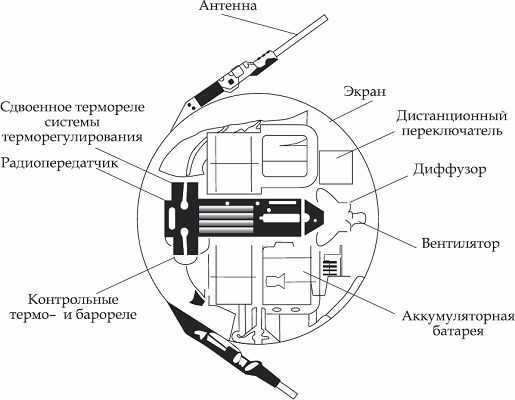
The artificial space satellite has a diameter of 58 centimeters. It is made up of two parts that are securely fastened together. On its surface, there are four VHF and KV band antennas, which enable tracking its location during its flight.
The upper section of the satellite is equipped with a hemispherical shield, which serves as a thermal insulation cover. Inside the satellite, there are batteries, a radio transmitter, as well as all the necessary instruments and sensors.
The Creation Story
Efforts to produce a man-made satellite were underway well before the launch of the “PS – 1”. Esteemed German engineer Werner von Braun was deeply involved in the development of an unmanned orbital vehicle.
While serving as a member of the U.S. Strategic Weapons Service, he showcased his experimental spacecraft model to the military. Unfortunately, none of his endeavors proved fruitful.
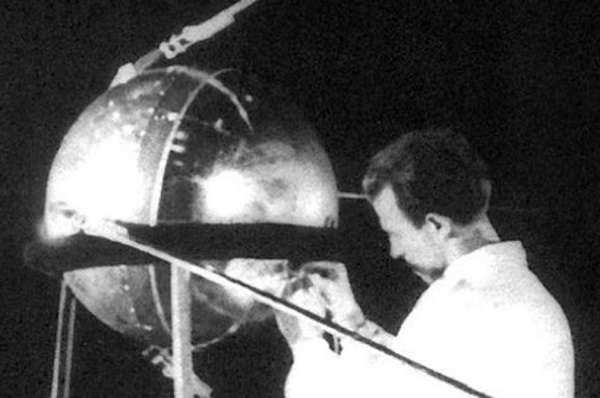
In the Soviet Union, groups of dedicated engineers tirelessly worked on this concept. They were not gathered in design labs or spacious hangars and workshops. The concepts of space travel were conceived in small locksmith shops and basements.
1946 marked the birth of the USSR’s rocket industry, led by the brilliant Soviet designer S. P. Korolev. Despite the country still recovering from the devastating aftermath of World War II, Soviet scientists and engineers were able to establish a formidable technical foundation.
A couple of years later, the R-1 ballistic missile achieved its first successful launch. Subsequently, a more advanced version called “R-2” was successfully launched, featuring increased range and flight speed.
Prototype of the inaugural orbital satellite
Following the triumphant trials of the groundbreaking intercontinental rocket “R-3”, Soviet scientists successfully persuaded the government to endorse the development of the world’s first earth satellite.
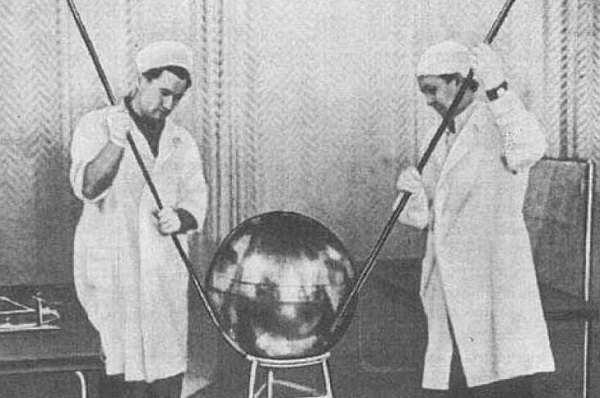
In 1955, the highest levels of government approved this project, marking the beginning of a challenging endeavor to create the world’s first-ever orbital object.
It is challenging to definitively determine who exactly invented and developed the satellite. This achievement can largely be attributed to the collective efforts of the entire team of designers and engineers, led by S. P. Korolev and M. K. Tikhonravov.
Two years later, the satellite was completed, weighing approximately 84 kg. The choice of a spherical shape for the satellite was deliberate. The sphere represents the ideal shape, offering maximum volume with minimal surface area.
Moreover, this object was intended to serve as a symbol of the space age and as an exemplary model of a spacecraft, particularly in terms of its visual aesthetics.
The Inauguration of the Initial Artificial Earth Satellite
As time went by, the accessibility of space was increasing at a rapid pace. On the 4th of October, 1957, a momentous event occurred in the vast steppe of Kazakhstan – the Baikonur Cosmodrome witnessed the launch of an intercontinental missile with a spherical entity on board, marking a significant milestone in the annals of human history.
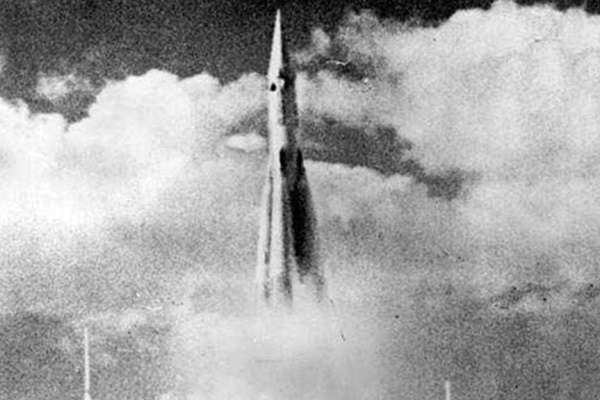
The R-7 carrier rocket ascended with a resounding noise. A short while later, the spacecraft was successfully deployed into orbit, reaching an altitude of approximately 950 kilometers.
Some time afterwards, the inaugural man-made object embarked on its legendary autonomous journey. The eagerly awaited signals commenced their reception on the terrestrial surface.
The satellite orbited the Earth for a period of 92 days, completing 1400 revolutions. Subsequently, the satellite met its demise. Gradually losing velocity, it descended towards the Earth’s surface and ultimately disintegrated, overcoming atmospheric resistance.
The First Soviet Satellite’s Flight History
Following its first orbit around the Earth, the renowned Soviet announcer Yuri B. Levitan proclaimed the triumphant launch of the inaugural satellite.
Due to the unique power settings of its radio transmitter, the satellite’s signal was effortlessly captured by experts and amateur radio enthusiasts alike. Millions of individuals worldwide eagerly listened to the “voice from space” through their radio receivers.
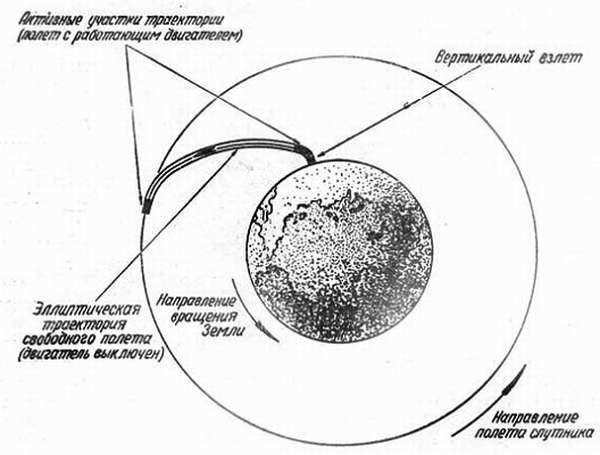
The satellite completed each revolution around the Earth in an average of 95 to 96 minutes. It is important to mention that the satellite itself was not visible to the naked eye, although a moving dot could be observed in the sky after its launch.
In reality, this moving object is simply the final stage of a rocket that continued to orbit for a period of time before burning up in the Earth’s atmosphere.
It is noteworthy: despite the fact that all instruments and control devices of the spacecraft were created from scratch, none of them experienced any failures during the flight.
The latest technologies of that time were utilized in the development of electronic power supply units, which had no equivalents in any country for many years to come.
Scientific outcomes from the Sputnik-1 mission
The significance of this historic event cannot be overstated. Not only did it bolster confidence in space travel and elevate the reputation of the nation, but it also made an immeasurable impact on the advancement and consolidation of scientific capabilities during that era.
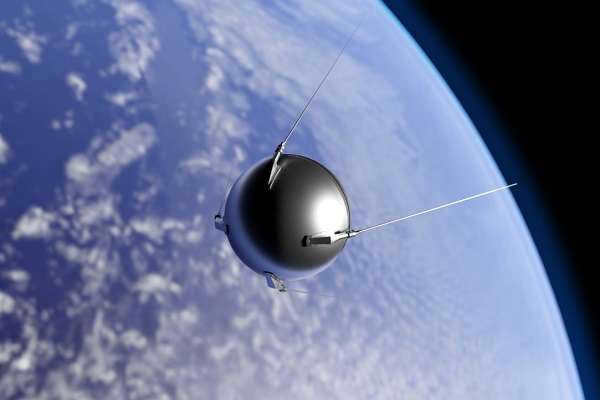
The examination of the PS-1 flight enabled the initiation of the investigation into the ionosphere, which had not been completely studied. One of the aspects that intrigued scientists was the propagation of radio waves through this medium. Furthermore, they conducted measurements of atmospheric density parameters and its impact on the orbital object.
The analysis of the gathered data served as valuable assistance in the design and development of new components and mechanisms for future spacecraft.
Fascinating trivia
Here are a few of the most intriguing pieces of information:
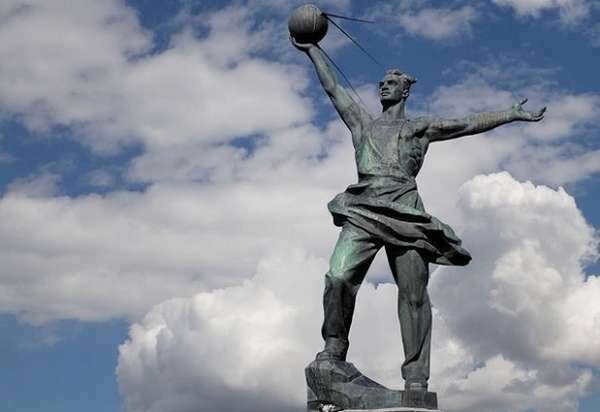
- On February 1, 1958, the launch of the first American satellite, known as “Explorer – 1,” marked a significant achievement in space exploration. Unlike our modern “PS 1,” this satellite had a unique cigar shape and was equipped with a range of advanced research equipment. With a mass of 8.3 kg, it paved the way for future scientific discoveries.
- In a notable milestone for India’s space program, the first Indian satellite, named “Aryabhata,” successfully entered its intended orbit on April 19, 1975. Designed as a science laboratory, this satellite aimed to collect valuable data and conduct scientific experiments. However, due to a malfunction in one of its systems, communication with the satellite was abruptly lost, leading to its unfortunate demise as it burned up upon reentry into the Earth’s atmosphere.
- In August 1960, S. P. Korolev successfully launched two canines named Belka and Strelka into the depths of outer space. The main objective of this extraordinary space expedition was to observe and study the effects of orbital flight on living organisms. Interestingly, these adorable monikers were bestowed upon the furry test subjects by a member of the medical team responsible for their care and observation.
- As a tribute to the momentous event that took place in 1957, a magnificent monument known as “Sputnik” was erected on one of the bustling streets of Moscow. Crafted from solid granite, this awe-inspiring sculpture stands as a symbol of the boundless bounds of human imagination and the unwavering dedication of the Soviet people.
The history of space exploration is marked by numerous noteworthy occurrences, each requiring immense dedication and sacrifice. Indeed, it was on October 4, 1957, that a pivotal milestone was reached, paving the way for humanity’s quest to reach the stars.
This particular date not only signified the birth of Russian cosmonautics as a distinct discipline, but also shaped its future trajectory.
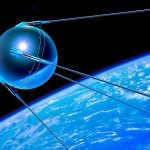
The flight parameters of the original Earth satellite The device of the initial Earth satellite “Sputnik-1” – the premier Earth satellite in the annals of mankind, it was launched in the Soviet Union on October 4, 1957, from the Tyura-Tam testing ground, which later became the Baikonur Cosmodrome. The primary Earth satellite, also known as PS-1 (Simple Satellite No. 1), was placed into orbit by the Sputnik launch vehicle, which was derived from the R-7 intercontinental ballistic missile.
On the occasion of the first satellite launched from the Tyura-Tam test site (Baikonur), the satellite itself was securely placed under the cone-shaped fairing of the rocket.
The launch of the inaugural Earth satellite held immense significance for the entire world. The satellite’s orbit around our planet served as undeniable proof that the sky is not solid and that venturing into space is indeed possible. It may sound amusing now, but imagine the time when there existed no visual confirmation, only scientific calculations and assurances. Humanity had never ventured beyond the Earth’s atmosphere before.
Undoubtedly, the significance of the USSR being the first to successfully launch a satellite into Space cannot be overstated. This event carried immense political weight, as it showcased the capabilities of Soviet science and technology to the entire global population. Western newspapers extensively covered this groundbreaking achievement, and thousands of people gathered around the equipment of radio enthusiasts just to hear the famous “beep-beep-beep-beep…”
The sight of a tiny dot soaring through the stars left an indelible impression on people worldwide and served as undeniable proof of this historic milestone. Eagerly, people turned their gaze towards the night sky, enthusiastically pointing out the minuscule flying dot to one another.
There is much more to tell about this extraordinary event, but the constraints of a short article do not allow for it.
Although the satellite itself did not have any scientific equipment, the launch of the initial Earth satellite yielded crucial technical information that was essential for the advancement of astronautics. Additionally, it also generated valuable scientific data. The technical data encompassed the functioning of all the components of the Sputnik launch vehicle, as well as the confirmation of all calculations pertaining to the rocket and satellite’s trajectory. Furthermore, data was collected on the performance of all systems in unconventional circumstances.
The most intriguing findings were derived from the observations of the first Earth satellite’s motion and the parameters of its radio signals. Astronomers and radio engineers closely monitored how atmospheric resistance influenced the spacecraft’s trajectory. Utilizing this data, they were able to calculate the density of the atmosphere at orbital altitudes. These measurements had never been conducted before, as the means to do so simply did not exist. All observations were conducted from the Earth’s surface, with the occasional use of balloons to reach limited heights. The remarkable discovery was that the atmosphere at orbital altitudes was significantly denser than previously estimated. This revelation proved to be of utmost importance in accurately plotting the paths of future spacecraft.
It is rather peculiar that the initial man-made satellite in the annals of humanity had the capability to only perform standard “radio signaling”. It lacked the ability to transmit any information regarding its journey. This is particularly surprising considering the fact that a comprehensive government program had been in place for nearly two years to establish a space laboratory. The reason behind this disparity is the intense space race that was underway between the USSR and the U.S. during that period, with both nations vying to be the first to launch an artificial satellite. Reports had emerged that the U.S. was gearing up to launch its inaugural satellite in the following year, 1958, with the objective of being the first to venture into space. The construction of a full-fledged laboratory required a significant amount of time, whereas the launch of a basic satellite could be expedited. This accounts for the design of the initial satellite, which incidentally had the codename PS-1 (Simple Satellite No. 1). The objective of being the first to journey into space was successfully achieved.
On November 3, 1957, the Soviet Union took the initiative and successfully launched the second satellite into space, equipped with a multitude of advanced scientific instruments. This historic mission also marked the first-ever animal cosmonaut, a courageous dog named Laika, who bravely ventured into the unknown. In contrast, the United States did not launch their satellite until February of the following year. Consequently, the Soviet Union can rightfully claim the title of having the first space science laboratory.
Key Facts
Which country was responsible for launching the inaugural artificial satellite? – The Soviet Union (USSR) took the lead in this groundbreaking endeavor. This momentous event sparked a fierce competition, known as the space race, between the two global powers: the United States and the USSR.
What was the name given to the world’s first artificial satellite? – Given that such a feat had never been accomplished before, Soviet scientists deemed the name “Sputnik-1” to be highly fitting for this remarkable achievement. The spacecraft was designated as PS-1, which stands for “Prostyshiy Sputnik-1”.
The satellite had a simple external design, consisting of an aluminum sphere measuring 58 cm in diameter. Two curved antennas were attached to the sphere in a crosswise manner, enabling the device to emit radio radiation evenly in all directions. The sphere itself was composed of two hemispheres secured together with 36 bolts. Within this structure, there were 50-kilogram silver-zinc batteries, a radio transmitter, a fan, a thermostat, and pressure and temperature sensors. Overall, the satellite had a mass of 83.6 kg. Notably, the radio transmitter operated within the frequency range of 20 MHz to 40 MHz, making it accessible for regular radio enthusiasts to track.
"The Earth Seen from Space"
The photograph known as "Blue Marble" gained considerable fame and was widely circulated until 2002. It provides a stunning depiction of the Earth as seen from space. The creation of this photograph was the result of extensive work and collaboration. Scientists meticulously assembled a unique color mosaic using slices from numerous frames captured during months of research, which included the observation of ocean movements, drifting ice, and cloud formations.
"Blue Marble" continues to be revered and recognized as a cherished symbol. It remains the most detailed and comprehensive image of our planet, showcasing its remarkable beauty and complexity.
Creation Story
The origin of the inaugural space satellite and space journey in general commences with the primary ballistic missile – Fau-2 (Vergeltungswaffe-2). This rocket was engineered by the renowned German inventor, Wernher von Braun, towards the conclusion of World War II. The initial trial launch occurred in 1942, with the combat launch taking place in 1944. A total of 3225 launches were executed, predominantly on the British mainland. Following the war, Wernher von Braun surrendered to the United States Army and assumed the role of head for the Armament Design and Development Service in the United States. As early as 1946, the German scientist submitted a report titled “Preliminary design of an experimental spacecraft orbiting the Earth” to the U.S. Department of Defense, wherein he indicated that it was feasible to develop a rocket within a five-year span that could successfully launch such a vessel into orbit. However, the project did not receive approval for funding.
In 1948, engineer Mikhail Tikhonravov presented a report to the scientific community regarding composite rockets and the findings of his calculations. According to his research, these newly developed rockets had the potential to travel vast distances and even launch an artificial satellite into Earth’s orbit. However, Tikhonravov’s claims faced criticism and were not taken seriously. As a result, his department at NII-4 was disbanded due to their perceived lack of relevance. Thankfully, thanks to the efforts of Mikhail Klavdievich, the department was later reestablished in 1950. By this time, Tikhonravov had already begun discussing the mission to successfully launch a satellite into orbit.
Issue with the thermal protection system
The initial deployment of the R-7 occurred on May 15, 1957. Unfortunately, the rocket disintegrated shortly after covering a distance of just 400 kilometers. Subsequently, in the following month, a subsequent launch endured for a mere 33 seconds. However, various enhancements were implemented, and on August 21, after a triumphant journey spanning 6,000 kilometers, the missile struck its intended objective. A few days later, the TASS agency proudly proclaimed the Soviet Union’s accomplishment of a “successful trial of a multi-stage intercontinental ballistic missile.”
A second test launch was successfully conducted on September 7. Nikita Khrushchev anticipated a strong global reaction, but it did not materialize. The missile traversed the entire expanse of the USSR, and the monitoring systems employed for modern North Korean launches were non-existent at the time. With no concrete evidence, the Western world appeared unwilling to accept that Russia possessed a functioning ICBM.
However, another issue arose in reality. Once the missile entered the Earth’s atmosphere, the warhead had to endure the extremely high temperatures generated by the friction with the air. Unfortunately, the heat shield failed in both test flights, resulting in the burned wreckage failing to reach the ground or hit the intended target. A genuine nuclear warhead would have self-destructed long before detonation.
It took several months for the new heat shield design to be prepared for testing. Simultaneously, the components for the new R-7s were being delivered, ready to be assembled and launched.
A representation of the satellite
Following the creation of the R-3 ballistic missile, its capabilities were revealed, showcasing its ability to not only strike targets up to 3000 kilometers away, but also to successfully launch a satellite into orbit. By 1953, the scientists had managed to persuade the highest-ranking officials that the launch of an orbital satellite was indeed achievable. In addition, the military leaders recognized the potential for developing and launching an artificial Earth satellite (EAS). As a result, in 1954, a decree was issued to establish a dedicated group at NII-4 under the leadership of Mikhail Klavdievich, tasked with designing the satellite and planning the mission. During the same year, Tikhonravov’s team presented a comprehensive space exploration program, encompassing the launch of an ISV and even a manned lunar landing.
The inquiry about the creator of Sputnik-1 remains inconclusive. The inception of the initial Earth satellite occurred under the guidance of Mikhail Tikhonravov, while the construction of the launch vehicle and the successful launch of the satellite into orbit were overseen by Sergei Korolev. Nevertheless, a substantial number of scientists and researchers contributed to both endeavors.
Korolev was willing to take risks
Sergei Korolev was not willing to wait for the completion of the new heat shield testing. He had a clear vision for the new rockets that were being developed – he wanted to launch a satellite. However, the Soviet military had different priorities. Their main focus was on having a fully operational ICBM. They believed that launching a satellite was a waste of time and resources, dismissing it as scientific nonsense; they believed that science could wait.
Korolev decided to take a risk and defy the military’s stance. He directly approached Nikita Khrushchev, disregarding the military’s objections. He highlighted the immense propaganda value of being the first country to successfully launch an object into orbit, and managed to convince the Soviet leader to approve the satellite’s launch on the next R-7 rocket.
History of Space Launches
The Inaugural Launch of PS-1 Satellite
In February 1955, the highest authorities gave their approval for the establishment of the Scientific Research Test Site No. 5 (later known as Baikonur), which was designated to be located in the desert of Kazakhstan. The initial test launches conducted at the site involved the R-7 type ballistic missiles. However, after five attempts, it became evident that the large warhead of the missile was unable to withstand the extreme temperatures and would require modifications, a process that would take approximately six months. Due to this setback, S. P. Korolev requested two rockets from N. S. Khrushchev for the experimental launch of the PS-1 satellite. By the end of September 1957, the modified R-7 rocket arrived at Baikonur, featuring a lighter warhead section and a satellite transition module. The unnecessary components were removed, resulting in a significant reduction of 7 tons in the overall mass of the rocket.
On October 2, the order for flight testing of the satellite was signed by S. P. Korolev and a notice of readiness was sent to Moscow. Despite receiving no response from Moscow, Sergei Korolev made the decision to launch the Sputnik launch vehicle (R-7) from PS-1 to the launch position.
The reason for the leadership’s insistence on launching the satellite into orbit during this period is that the International Geophysical Year took place from July 1, 1957 to December 31, 1958. During this time, 67 countries collaborated on geophysical research and observations according to a unified program.
The inaugural depiction of twin celestial bodies in a solitary composition
This composition defies conventional human observation. It exhibits two radiant arcs (comprising of the Earth and the Moon) set against an abyssal backdrop of the cosmos.
Upon the Earth’s crescent, which emanates a bluish hue, one can discern the outlines of Eastern Asia, the Western Pacific Ocean, and portions of the Arctic, which are bestowed with a pallid complexion. This visual record was immortalized during the autumn of 1977 by the Voyager 1 interplanetary probe. Within this snapshot, our planet Earth is captured from a distance exceeding 11 million kilometers.
Flight History
Illustration on the PS-1 satellite
At 22:28:34 Moscow time, a rocket carrying a satellite was launched from the initial site of NIIP No. 5 (Baikonur). Just 295 seconds later, the rocket’s central unit and the satellite were positioned into an elliptical orbit around the Earth (with an apogee of 947 km and perigee of 288 km). PS-1 then separated from the rocket and emitted a signal. This signal consisted of repeated beeps that were detected at the testing site for a duration of 2 minutes, until Sputnik-1 vanished beyond the horizon. On the initial revolution of the spacecraft around the Earth, the Telegraph Agency of the Soviet Union (TASS) announced the successful launch of the world’s first satellite.
Following the reception of signals from PS-1, comprehensive information started to be obtained concerning the spacecraft, which, as it transpired, was perilously close to falling short of attaining escape velocity and missing the mark for orbital insertion. The root cause for this mishap was an unanticipated malfunction of the propellant control system, resulting in a lag in one of the engines. It was a hair’s breadth away from catastrophe.
Nevertheless, PS-1 managed to achieve a successful elliptical orbit, where it remained for a period of 92 days, completing a total of 1440 revolutions around the planet. The radio transmitters on board the satellite operated for the first two weeks. What ultimately led to the demise of the initial Earth satellite? It lost momentum due to friction, causing it to gradually decay and ultimately burn up in the denser layers of the atmosphere. Interestingly, many individuals were able to witness a shining object traversing the sky during this time. However, without specialized optics, the shiny body of the satellite itself couldn’t be observed. In reality, this object was the second stage of the rocket, which also remained in orbit alongside the satellite.
The perspective of the planet as seen from outer space bears resemblance to that of the Moon. In contrast, the Earth emits a radiant glow, albeit with a stunning blue tint akin to the hues found in precious gemstones, such as amethyst or sapphire. The Earth possesses a plethora of additional colors within its repertoire, including shades of red, green, orange, and violet, contingent upon its positional phase — be it during the sunset or sunrise periods, and so forth. Predominantly, however, the prevailing shade is an ethereal blue, given that the expanse of water surpasses the landmass by a factor of five.
The primary hue is blue-blue, as the expanse of water covering the Earth is five times greater than the land area. Additionally, when viewed from above, one can observe continents adorned with green or brown tones, wisps of white-blue hues – clouds gracefully floating above the Earth’s surface. During the nighttime, the view from space reveals luminous dots scattered across the landscapes of America, Europe, Russia, Japan, and Southern Africa. These regions are the most industrialized and advanced, with the brightest points concentrated in the vicinity of major metropolitan areas.
Thanks to the marvels of technology, modern humans have been granted a glimpse of Earth from an extraterrestrial perspective through photographs captured from Earth’s orbit. This astounding technology allows people to truly comprehend the appearance of our planet when viewed from space.
The Importance of the First Satellite Mission
During the Cold War era, the Soviet Union achieved a major milestone by successfully launching the first artificial satellite into space. This groundbreaking achievement not only ignited a sense of national pride within the USSR but also dealt a significant blow to the prestige of the United States. As reported by the United Press, while the US had been dominating the conversation surrounding artificial satellites, it was Russia that emerged victorious in the race to launch one into space.
Contrary to the perception of the USSR being technologically inferior, it was their satellite that made history as the very first one. Furthermore, the satellite’s signal could be tracked by amateur radio operators, further highlighting the impressive feat. This momentous flight marked the beginning of the space age, setting off a fierce competition between the Soviet Union and the United States, known as the space race.
Only four months passed, and on February 1, 1958, the United States successfully launched its Explorer 1 satellite, which was constructed by a group of scientists led by Wernher von Braun. Despite being significantly lighter than the PS-1 and carrying only 4.5 kg of scientific instruments, it came second in the race and did not generate the same level of public interest.
Although the R-7 rocket achieved incredible success as a satellite carrier (today, astronauts visiting the International Space Station use an extended version of this same rocket), it was not as successful as an ICBM. The center rocket’s complex design, with attached boosters, required several days for assembly. Additionally, it took seven hours to refuel and prepare the missile for launch, which meant there was no immediate response to an American attack.
Furthermore, the elevated launch pad made the R-7 highly vulnerable. The Soviet warheads were also smaller and lighter, which quickly rendered the massive R-7 obsolete.
Scientific findings from PS-1 mission
The PS-1 mission had multiple objectives:
- Evaluating the technical capabilities of the vehicle and validating the calculations used for a successful satellite launch;
- Conducting ionosphere research. Prior to the spacecraft’s launch, radio waves sent from Earth were being reflected by the ionosphere, preventing its study. With the launch of the PS-1, scientists now have the ability to study the ionosphere by analyzing the interaction between radio waves emitted by the satellite in space and their journey through the Earth’s atmosphere to the surface.
- Estimating the density of the upper atmosphere by observing the spacecraft’s deceleration rate caused by friction with the atmosphere;
- Researching the impact of the outer space environment on hardware and identifying optimal conditions for hardware operations in space.
Exploring the auditory signals emitted by the First Satellite
Despite the absence of any scientific equipment aboard the satellite, valuable findings were obtained by tracking its radio signal and analyzing its characteristics. For instance, a team of Swedish scientists utilized the Faraday effect to assess the electronic composition of the ionosphere. This phenomenon states that light undergoes polarization changes when it traverses a magnetic field. Additionally, a group of Soviet researchers from Moscow State University devised a method to observe the satellite and precisely determine its coordinates. By studying the elliptical orbit and monitoring its behavior, scientists were able to ascertain the atmospheric density in the orbital altitude region. Surprisingly, the increased atmospheric density in these areas led to the formulation of a satellite braking theory, which played a significant role in the advancement of astronautics.
The Space Center has developed a customized flight program for the equipped object. The program encompasses the following objectives:
- Ensuring the accuracy of calculations and the feasibility of technical solutions;
- Measuring the density indices of the upper atmospheric layer;
- Analyzing the conditions necessary for the equipment to function properly;
- Investigating the ionospheric origin of radio waves emitted by the device’s transmitter.
Despite the relatively short duration of the research work, significant data have been obtained, providing evidence of the potential for space exploration through optical observations and radio signals.
Fascinating Trivia
- In Moscow, there is a monument dedicated to the creators of the world’s first artificial satellite. In the “Radio” magazine for radio enthusiasts, instructions were printed in advance on how to receive a “signal from space” from PS-1;
- In the past, scientists would take 30-60 minutes to calculate satellite coordinates with a time reference. Nowadays, similar calculations can be done by a computer in 1-2 seconds;
- Prior to the launch of the first American satellite, the Soviet Union had already launched its second spacecraft, Sputnik-2, on November 3, 1957. Notably, this was the first time a living creature, a mongrel dog-cosmonaut named Laika, was onboard the satellite. Although it was anticipated that the dog would survive about a week in Earth’s orbit, it tragically passed away 5-7 hours after launch due to overheating.
- On October 4, 2007, a memorial commemorating the “First Man-Made Satellite” was constructed on Cosmonauts Avenue in the scientific community of Korolev, coinciding with the 50th anniversary of Sputnik-1.
- In response to the commencement of the space race, the formation of NASA became an imperative for the United States.
- The launch of Sputnik 1 had a significant impact on the establishment of DARPA and the Internet. In response to the successful launch of Sputnik 1 and the potential for creating a new broadcasting network, the United States established the Advanced Research Projects Agency (ARPA) in 1957. Additionally, with the goal of establishing a reliable long-distance information transmission system in the event of war, the U.S. began developing a computer network. On December 5, 1969, the ARPANET network connected three universities and a research center. This technology was later adopted by CERN and eventually evolved into the World Wide Web.
For a video about the first satellite, check out https://youtu.be/VxKUtAD4Jgs.
Some basic details about Planet Earth
Planet Earth, situated within the solar system, ranks as the fifth largest planet. It consists predominantly of chemical elements like oxygen, sulfur, hydrogen, iron, aluminum, silicon, calcium, hydrogen, magnesium, and nickel, which collectively make up 98% of its composition. The remaining 2% is comprised of various other chemical elements. Through centuries, there has been ongoing debate regarding the external appearance of this planet, resulting in the conclusion that it has a flattened ellipsoid shape. It encompasses an area of 12,756 square kilometers and has a circumference of 40,000 kilometers. Due to the planet’s rotation, a bulge forms near the equator, causing the equatorial diameter to be 43 kilometers larger than the polar diameter.
Planet Earth completes one revolution around its axis in a period of 23 hours, 56 minutes, and 4 seconds, while the duration of its orbit around the sun spans slightly over 365 days.
The primary distinction between planet Earth and the other celestial bodies is the vast amount of water it possesses. Over half (3/4) of Earth’s surface is covered by gray glaciers and boundless blue waters.
Winter on Earth
What does Earth look like during winter when observed from space? NASA has provided a visual demonstration of New Year’s Eve celebrations. According to agency personnel, illumination in metropolitan areas increases by nearly 30 percent during the holiday season. The video, compiled from images taken by the Some NPP satellite, has been shared on the internet.
Scientists from the National Atmospheric and Oceanic Administration and NASA have thoroughly verified the data obtained from this satellite.
The Apollo 11 crew captured two additional iconic images, showcasing the Earth’s Terminator as a distinct curved line. This line of demarcation separates the illuminated portion of the celestial body from the unilluminated portion, encircling the planet twice daily during sunrise and sunset.
Such a phenomenon is exceptionally uncommon at both the South Pole and North Pole.
Earth Observation from the International Space Station
It is truly fascinating to witness the captivating beauty of our planet, Earth, in its present state. This extraordinary experience has become possible thanks to the presence of an international space station. Gone are the days when a real-time satellite image of our planet was merely a figment of our imagination. Today, you have the opportunity to join the multitude of individuals who are marveling at the wonders of our planet in real time through this webpage.
Situated at an altitude of 400 kilometers, the space station houses three state-of-the-art cameras, developed by private companies under the guidance of NASA. These high-quality cameras are operated by astronauts at the Mission Control Center, who skillfully maneuver them to capture breathtaking views of Earth from various angles. Now, ordinary people like you and me can observe our planet from the satellite’s perspective, witnessing the majesty of mountains, the vastness of oceans, the ethereal atmosphere, and the sprawling cities. The mobility of the space station allows us to virtually traverse half the globe within the span of an hour.
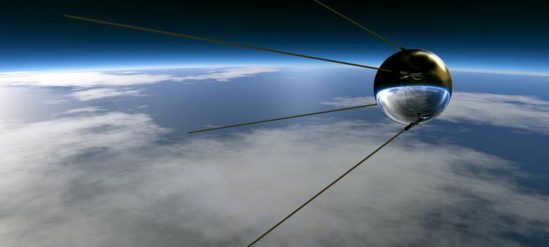

Hello there, my beloved readers! When you gaze up at the night sky, amidst the vast expanse of a million stars, you may occasionally spot bright luminous dots swiftly traversing the heavens. These are none other than satellites. In this age of space exploration, these man-made companions utilize cellular communication to provide us with the ability to watch TV and listen to radio. They also assist ships in navigating the vast oceans and provide meteorologists with valuable weather data.
Are you aware of which country was responsible for launching the very first artificial satellite, and do you know the year in which this momentous occasion took place? It may come as a surprise to many that it occurred 60 years ago, back in 1957.
What was the origin of it all?
The Soviet Union was the first to successfully launch an artificial satellite into Earth’s orbit, marking the beginning of the space race between the USSR and the United States. The team of scientists working on practical cosmonautics had a challenging mission – to outpace the U.S. and demonstrate the scientific prowess of the Soviet Union.
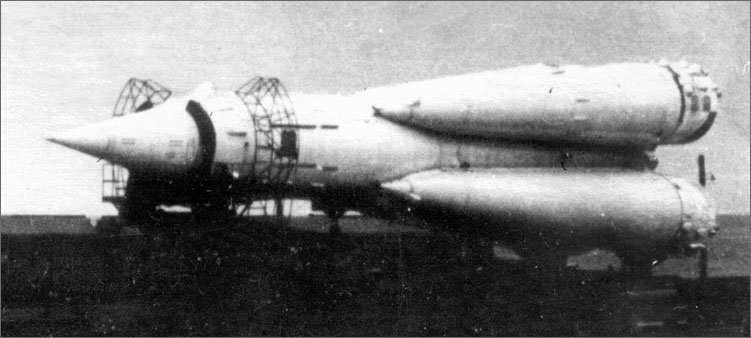
The origins of artificial satellites can be traced back to the years following World War II, when scientists at the USSR Jet Institute were heavily involved in the design, testing, measurement, and improvement of ballistic missiles. Under the guidance of Sergei Korolev, their efforts resulted in the development of the powerful R-7 rocket and sparked the idea of creating an artificial satellite that could be launched into orbit using this rocket.
The initial spacecraft was dubbed PS-1, which stood for Simple Satellite 1. Developed in a matter of weeks, it truly lived up to its name as there was not enough time to create a more complex device – the Americans were hot on our trail.
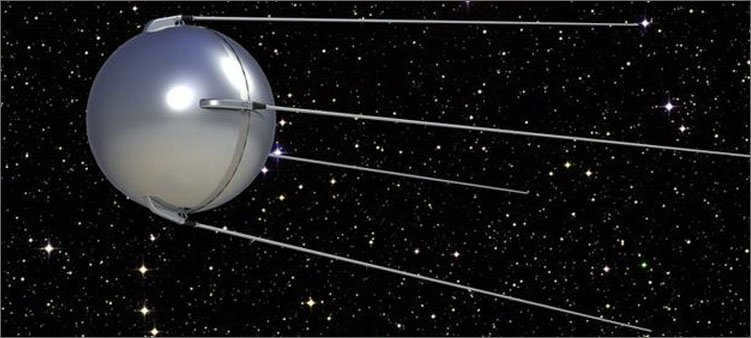
The initial artificial satellite was constructed in a rather straightforward manner – as a spherical metal object measuring 58.5 centimeters in diameter. The satellite was equipped with two antennas, one measuring 2.9 meters and the other 2.4 meters in length. These antennas were positioned at a 70-degree angle in a crisscross pattern, allowing for the even distribution of radio signals in various directions.
If one were to unscrew the 36 bolts, the sphere could be separated into two halves, exposing the internal components:
- Batteries – these were intended to provide the satellite with uninterrupted power for a minimum of two weeks.
- Radio transmitters capable of emitting signals on two different frequencies – 20 and 40 Megahertz. These signals were audible even to amateur radio operators.
- There was a fan that would activate as soon as the temperature surpassed 36 degrees and would deactivate on its own once the air cooled down to 20 degrees.
- There was a temperature control system equipped with sensors that would send a signal to the fan whenever the temperature increased.
- The system also included on-board electrical automation and pressure sensors.
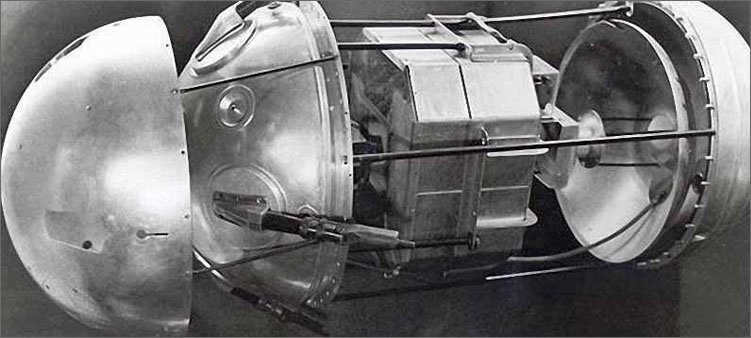

All these components were intertwined with electrical cables and interconnected into a single operational mechanism. The total weight of the complete satellite amounted to 83.6 kilograms.
The dawn of the space era
The PS-1 was launched on October 4, 1957 using the Sputnik launch vehicle, which was developed based on the ballistic R-7. The rocket, with a small silver sphere at its “head,” was launched from the Tyura-Tam range (which later became the renowned Baikonur Cosmodrome) at 22:28 Moscow time.
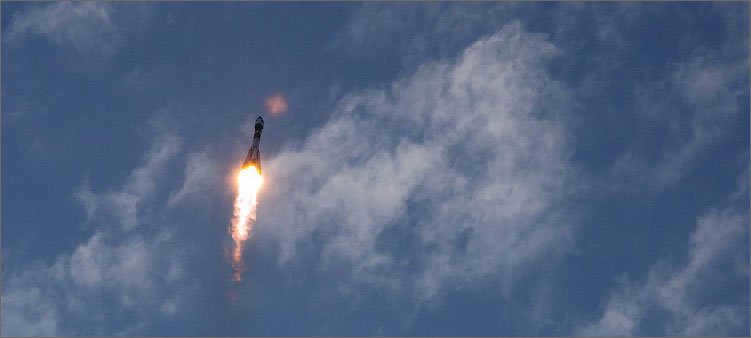
The satellite achieved Earth orbit at an altitude of 947 kilometers after 295 seconds, and after another 314 seconds, it emitted its first sound: “Beep! Beep! Beep!”. This eagerly anticipated moment was eagerly awaited by all Soviet radio enthusiasts. The sight of the satellite in the night sky captivated hundreds of thousands of residents, who were searching for the elusive flying object with awe and wonder.

During its 92-day journey, PS-1 completed 1440 orbits around the Earth, covering a distance of approximately 60 million kilometers. Unfortunately, on January 4, 1958, it experienced a decrease in speed and ultimately disintegrated due to the friction it encountered with the Earth’s dense atmospheric layers upon reentry. As a result, only replicated versions of PS-1 are available for viewing at exhibitions today.
Launched: What Comes Next?
The launch of the initial Earth satellite marked the beginning of an active era in outer space exploration. Little did anyone know that the first signals received from orbit would reveal that the success of Soviet science and the failure of the rocket launch hinged on a mere fraction of a second.
It was discovered that at the 16th second of the flight, there was a malfunction in the fuel supply system, causing the central engine to shut down earlier than anticipated. This alone may not have provided enough velocity, potentially resulting in the rocket falling back to Earth. However, luck was on the side of the scientists at that moment, and the Soviet Union rightfully claimed the title of being the first in space.
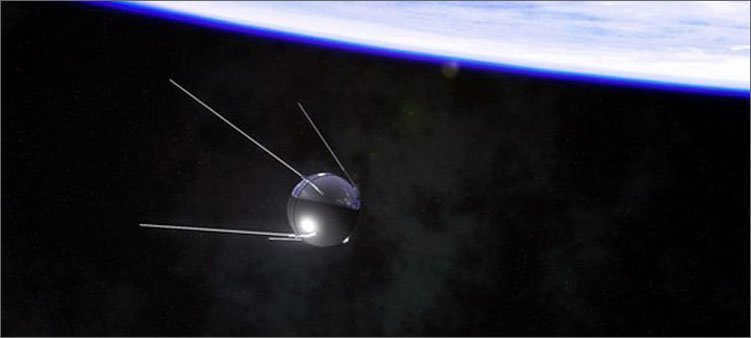
Thanks to the successful launch, scientists were able to obtain crucial technical data that would be used for further calculations regarding rocket trajectories, system operations, and signal transmission. Additionally, astronomers were able to determine the density of the atmosphere by analyzing changes in the satellite’s speed, a feat that had never been accomplished before.
Shortly after this achievement, on November 3 of the same year, the USSR successfully launched a second satellite into space. This satellite was equipped with different equipment and had a live passenger onboard – a dog named Laika. From then on, the exploration of space only continued to expand, with notable milestones such as the missions of Belka and Strelka, leading up to the historic journey of Yuri Gagarin.
In recognition of this groundbreaking achievement, a monument was erected in Korolev 50 years after the initial launch, in 2007, to commemorate the first Earth satellite.

